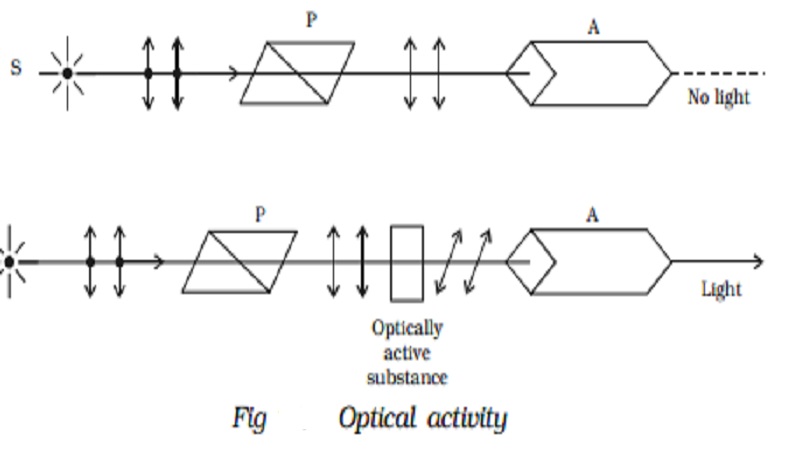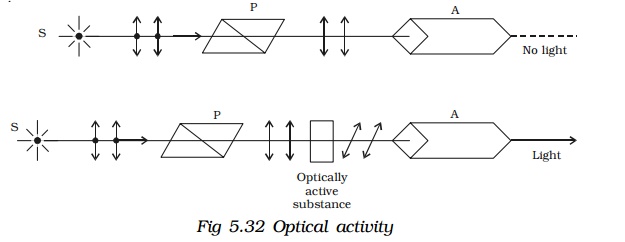Chapter: physics 11th 12th standard school college definition answer assignment examination viva question
Optical activity

Optical activity
When a plane polarised light is made to pass through certain substances, the plane of polarisation of the emergent light is not the same as that of incident light, but it has been rotated through some angle. This phenomenon is known as optical activity. The substances which rotate the plane of polarisation are said to be optically active. Examples : quartz, sugar crystals, turpentine oil, sodium chloride etc.
Optically active substances are of two types, (i) Dextro-rotatory (right handed) which rotate the plane of polarisation in the clock wise direction on looking towards the source. (ii) Laevo - rotatory (left handed) which rotate the plane of polarisation in the anti clockwise direction on looking towards the source.
Light from a monochromatic source S, is made to pass through a polariser P. The plane polarised light is then made to fall on an analyser A, which is in crossed position with P. No light comes out of A. When a quartz plate is inserted between the polariser and analyser some light emerges out of the analyzer A (Fig. 5.32). The emerging light is cut off again, when the analyzer is rotated through a certain angle.
This implies that light emerging from quartz is still plane polarised, but its plane of polarisation has been rotated through certain angle.

The amount of optical rotation depends on :
§ thickness of crystal
§ density of the crystal or concentration in the case of solutions.
§ wavelength of light used
§ the temperature of the solutions.
Related Topics